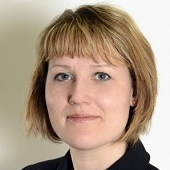Advanced and Sustainable Low-Carbon Cement and Concrete Materials (Second Edition)
A special issue of Materials (ISSN 1996-1944). This special issue belongs to the section "Construction and Building Materials".
Deadline for manuscript submissions: 10 August 2024 | Viewed by 1070
Special Issue Editor
Interests: materials engineering; materials chemistry; silicates; building materials; glass-based composites; inorganic binders
Special Issues, Collections and Topics in MDPI journals
Special Issue Information
Dear Colleagues,
The production of concrete is consistently higher each year than the production of all other materials combined. Cement, a key ingredient in concrete, accounts for around 7% of global CO2 emissions, is the second-largest industrial emitter of CO2 after iron and steel and its manufacturing process accounts for 95% of the carbon footprint of concrete. According to the International Energy Agency's Sustainable Development Goals, cement producers should reduce their carbon intensity at an annual rate of 0.3% per ton of cement produced by 2030. New technologies and materials are constantly being developed to complement current practices for creating greener structures. The common goal to design green buildings to reduce the overall impact of the built environment on human health and the natural environment through the efficient use of energy, water and other resources; to protect the health of occupants and improve the productivity of employees; and to reduce waste, pollution and environmental degradation. There are some widely known green materials that can be used in the construction of buildings, which are recyclable, reusable, can reduce energy waste in the home and also reduce the economic and environmental impact of waste disposal.
Therefore, this Special Issue is dedicated to recent research focused on the development of advanced building materials and components that contribute to the systematisation and dissemination of knowledge related to the long-term performance and durability of construction materials in line with sustainability and eco-efficiency. Among others, the reuse of secondary raw materials in the development of composite materials, supplementary cementitious materials and alternative binders are the focus of the studies published in this Special Issue. Thus, this Special Issue will present new developments in the field of durable advanced building materials, systems and components, and their characterisation, life prediction methods and maintenance management. It will serve as an overview of the current state of knowledge for the benefit of professionals such as materials engineers, designers and production engineers.
Prof. Dr. Milena Pavlíková
Guest Editor
Manuscript Submission Information
Manuscripts should be submitted online at www.mdpi.com by registering and logging in to this website. Once you are registered, click here to go to the submission form. Manuscripts can be submitted until the deadline. All submissions that pass pre-check are peer-reviewed. Accepted papers will be published continuously in the journal (as soon as accepted) and will be listed together on the special issue website. Research articles, review articles as well as short communications are invited. For planned papers, a title and short abstract (about 100 words) can be sent to the Editorial Office for announcement on this website.
Submitted manuscripts should not have been published previously, nor be under consideration for publication elsewhere (except conference proceedings papers). All manuscripts are thoroughly refereed through a single-blind peer-review process. A guide for authors and other relevant information for submission of manuscripts is available on the Instructions for Authors page. Materials is an international peer-reviewed open access semimonthly journal published by MDPI.
Please visit the Instructions for Authors page before submitting a manuscript. The Article Processing Charge (APC) for publication in this open access journal is 2600 CHF (Swiss Francs). Submitted papers should be well formatted and use good English. Authors may use MDPI's English editing service prior to publication or during author revisions.
Keywords
- sustainability
- eco-efficiency
- advanced materials
- composites
- low-carbon cement
- secondary raw materials
- alternative binders
- supplementary cementitious materials






